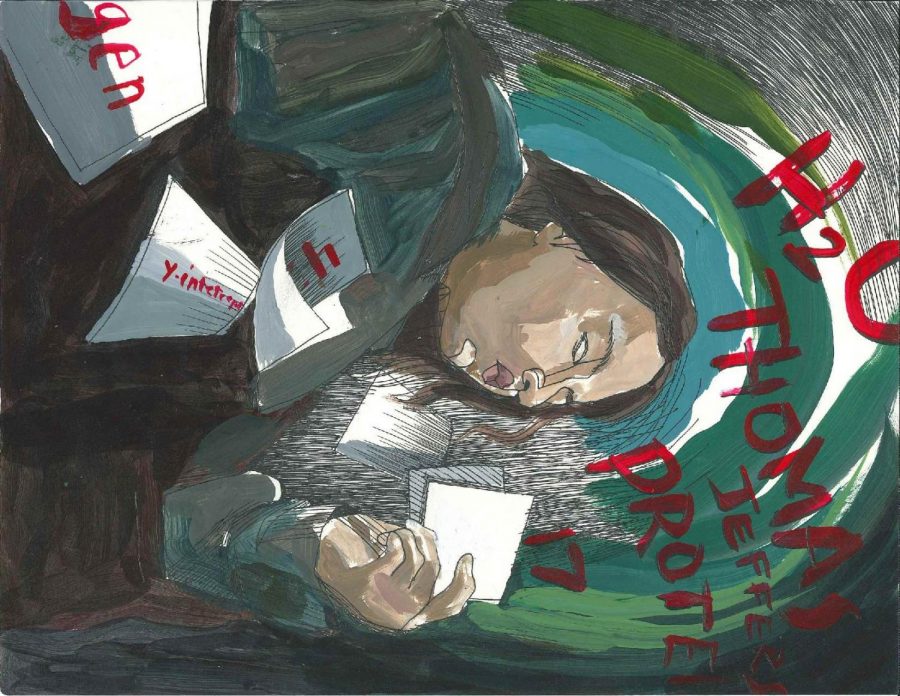A Critique of Memorization: Why Rote Learning Needs to Go
Memorization can be a common element of classes in high school.
December 3, 2019
I’m sure most CRLS students have taken a vocabulary test during their high school careers, or perhaps a test on the sines and cosines of the unit circle. I’m also positive that they studied for that test—at least if they wanted to do well they did. For vocabulary, their teacher most likely told them to “memorize” these words, and for math, to “memorize” the unit circle. What value should the memorization hold? It is empty, shallow, and meaningless. When teachers use memorization as their main form of teaching, it is referred to as “rote learning.”
We are all victims of rote learning. We have all had to go home, sit at our desks, and perform the laborious task of memorizing over fifty vocab words. And for what? If you asked yourself why you were memorizing those words, your response would almost always be “there’s a test on them tomorrow!” Is this a good enough reason? Defenders of these memorization tasks claim that they expand students’ vocabularies, and yet, students memorize the words for the test, then forget them soon after. So, is rote learning really worth it? Frankly, no. Rote learning is an outdated teaching method: one that gets in the way of real, meaningful learning, especially at the level of secondary education.
Advocates for rote learning claim it is impossible to have an education system without memorization. What about the alphabet? Or multiplication tables? For starters, this type of rote learning is only seen at the most elementary level, which differs greatly from the memorization seen in secondary schools. That being said, there is an important clarification to be made: the difference between rote learning with the intent of memorization and memorization as a byproduct of learning. For example, in my freshman English class, I was required to analyze a passage from Romeo and Juliet for an essay. I reread and picked apart the passage so intensely that I ended up memorizing it.
The same can be said for math. If you use the equation sin(π/2) = 1 in ten math problems a day, chances are you’ll memorize it. When applying, analyzing, or even thinking about a concept to the point of memorization, it is no longer pure memorization, but counted as meaningful learning.
Meaningful learning is the opposite of rote learning. Students take a concept and use logic to understand it. When using meaningful learning, a result or concept makes is understood, naturally.
A case study conducted by the Karolinska Institute, a Swedish university, supports the notion of meaningful learning being more effective than rote learning. A Swedish professor, Maria Weurlander, decided to switch from a lecture-based classroom to a series of seminars in which students worked in small groups and took on the roles of clinicians in her pathology class. She then gave a concluding survey to the students to hear their feedback. Almost all of the students said they appreciated the collaborative and engaging nature of the experiment. They all claimed they retained the content more than when listening to a lecture or studying on their own.
As students, we want to be engaged. We want not only to remember information but to learn it. We want to learn for ourselves, not for the test we have to take the next day. We want what we deserve: a meaningful education.
This piece also appears in our November 2019 print edition.










